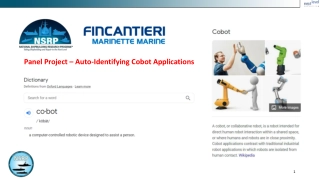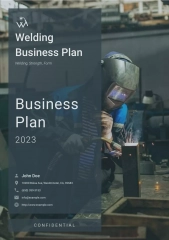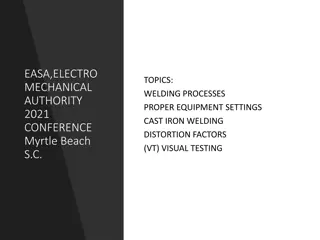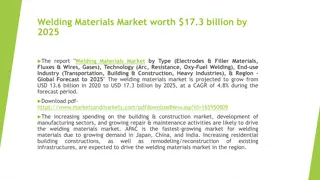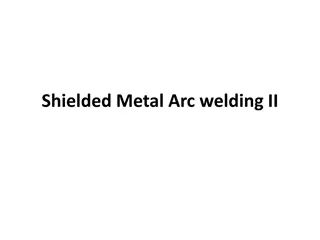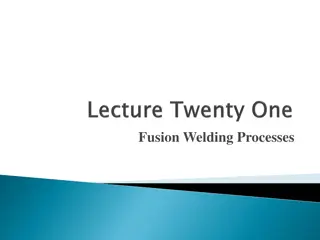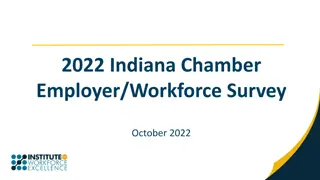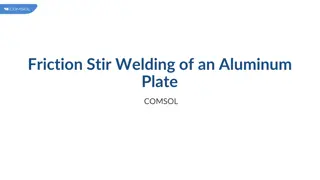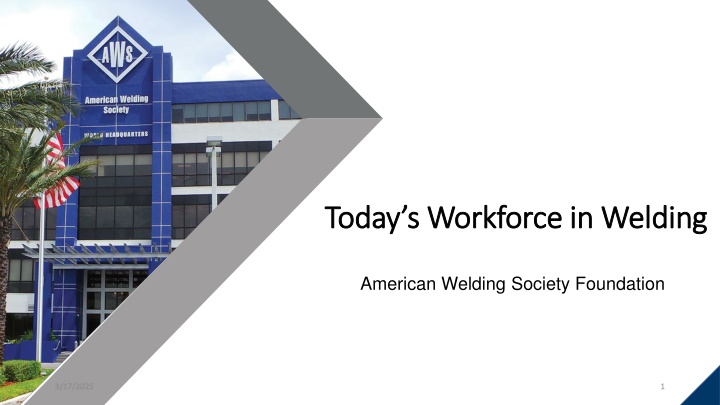
Addressing Skills Shortage in Manufacturing: Current State and Future Trends
The manufacturing industry faces a significant skills shortage, with executives citing various reasons such as negative perceptions, technology advancements, and lack of effective training programs. This shortage is widening, potentially leaving millions of positions unfilled by 2028. Automation is being used by many companies to address workforce challenges and fill job openings. Recognizing and tackling this skills gap is crucial for the future of the manufacturing workforce.
Download Presentation

Please find below an Image/Link to download the presentation.
The content on the website is provided AS IS for your information and personal use only. It may not be sold, licensed, or shared on other websites without obtaining consent from the author. If you encounter any issues during the download, it is possible that the publisher has removed the file from their server.
You are allowed to download the files provided on this website for personal or commercial use, subject to the condition that they are used lawfully. All files are the property of their respective owners.
The content on the website is provided AS IS for your information and personal use only. It may not be sold, licensed, or shared on other websites without obtaining consent from the author.
E N D
Presentation Transcript
Todays Workforce in Welding Today s Workforce in Welding American Welding Society Foundation 3/17/2025 1
Outline: Outline: Today s informative presentation showcases several important workforce topics: Key focus areas include: Current State of Skilled Trades Workforce Welding Workforce Deep Dive- National Data & Trends AWS Initiatives- Scholarships & Grants National Initiatives The skilled trades workforce exhibits a significant shortage that continues to grow. Talented Welding Personnel are among highest in demand- 3/17/2025 2
Exploring the Deloitte and the Manufacturing Institute Report Majority of executives reported talent availability as the key issue 9 out of 10 manufacturing executives believe there is a skills shortage today Causes of the skills shortage* 45% 36% 36% 32% 31% 31% 30% 24% 17% 14% Negative perception towards manufacturing industry Shifting skill set due to advanced technology and automation Retirement of baby boomers Access to talent New entrants Lacks of job flexibility Increased demand for skilled employees Lack of effective job training programs Loss of embedded knowledge due to movement of experienced workers Insufficient STEM talent have different expectations Note: *The executives were asked to rate the top reasons for skills shortage Source: 2018 Deloitte and the Manufacturing Institute Skills Research Initiative 3/17/2025 3
The skills shortage appears to be widening- the skills gap may leave an estimated 2.4 million positions unfilled by 2028 2.69 Million jobs from retirements 1.96 Million open jobs due to industry growth 4.6Million Manufacturing jobs needed 2018 2028 More than 5 out of 10 skilled open positions lie vacant due to skills shortages in the US manufacturing industry 2.4 Million Manufacturing jobs could remain unfilled due to the skills gap Only 2.2 Million jobs are likely to be filled Source: BLS Data, Data from Oxford Economics Model, Deloitte and the Manufacturing Institute Skills Research Initiative Note: *Calculated on the basis of 52.7% of the skilled manufacturing positions are unfilled (per the 2018 survey); **Retirement age of 66 3/17/2025 4
1 In 3 Surveyed Companies are Supplementing Workforce Challenges with Automation Of these executives found automation helpful to overcome the challenge of filling job openings for qualified talent Executives stated their organization used automation in the past three years to specifically supplement the workforce 52% 35% Areas for adding automation to eliminate unfilled jobs: Positions supplemented with automation Production 60% Supply chain/logistics functions 34% Engineering or product design 33% 58% 46% Across ecosysystem 31% Maintenance, repair 29% Low skilled production Skilled production Operational functions 26% 3/17/2025 5 Aftermarket service 25% Source: 2018 Deloitte and the Manufacturing Institute Skills Research Initiative

